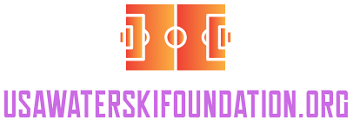In our quest to streamline our team’s performance, we’ve often found ourselves overwhelmed by a myriad of metrics. Not all metrics, however, are created equal, and as we’ve discovered, only a select few truly stand the test of time and circumstance.
The metrics that travel well are those that remain relevant, regardless of the industry, project, or team configuration. They provide reliable insights and guide us towards achieving our collective goals more efficiently.
As we delve into the discussion of the ten team metrics that actually travel well, we aim to share our experiences and insights that have helped us navigate the complexities of team dynamics across various environments.
By focusing on these adaptable metrics, we believe we can foster a culture of continuous improvement and accountability. Join us as we explore these essential metrics and how they can be leveraged to enhance team productivity and cohesion.
Universal Team Engagement Metric
To effectively gauge team engagement across diverse settings, we need a universal metric that can adapt to various team dynamics and cultures.
Such a metric should help us understand and improve team performance by focusing on key aspects like:
- Collaboration
- Adaptability
Collaboration is essential in creating an environment where every team member feels valued and included. By measuring how well we’re collaborating, we can:
- Identify our strengths
- Pinpoint areas needing improvement
- Ensure everyone contributes their best
Adaptability is another crucial element. Teams that can adjust to new challenges and environments often outperform those that can’t. By assessing adaptability, we can foster:
- Resilience
- Flexibility
This universal metric isn’t just about numbers; it’s about nurturing a sense of belonging. When everyone feels part of the team, we create a stronger, more cohesive unit.
Let’s embrace this metric to:
- Enhance our engagement
- Drive our success
- Build connections that transcend boundaries
Remote Collaboration Index
In today’s digital age, we need an effective Remote Collaboration Index to measure how well we’re working together across virtual platforms. This index is crucial as teams thrive on connection and shared goals. It helps us understand and improve team performance by highlighting our strengths and areas for growth in remote collaboration.
The index evaluates how seamlessly we:
- Communicate
- Share resources
- Solve problems from afar
When using the Remote Collaboration Index, we’re not just measuring output but also the quality of our interactions. We can see:
- Where our adaptability shines
- Where it needs fine-tuning
This ensures that everyone feels valued and heard, regardless of their location. This metric reinforces our shared identity and commitment to collective success.
By focusing on this index, we can build a more cohesive and responsive team culture. We can adapt to changing circumstances and technology, ensuring our collaboration remains strong and effective.
Together, we create an inclusive environment where everyone contributes to achieving our shared vision.
Agile Adaptability Score
Our Agile Adaptability Score quantifies how quickly and efficiently we respond to changes and unexpected challenges. This metric is crucial for maintaining high team performance, especially in today’s fast-paced environment. By measuring our ability to pivot and adapt, we ensure that our team doesn’t just survive but thrives amid change.
Adaptability is a cornerstone of successful collaboration. It’s not just about being flexible; it’s about being innovative when the unexpected arises. When we embrace adaptability, we enhance our problem-solving skills and strengthen our team dynamics.
We know that when each member feels supported and valued, our collective resilience and performance improve.
Our score highlights areas for growth, encouraging continuous improvement. By working together to boost our adaptability, we create a sense of belonging, where everyone feels their contributions matter.
This shared commitment to adaptability not only boosts our team’s morale but also elevates our overall performance, creating a stronger, more cohesive unit.
Communication Effectiveness Rating
Our Communication Effectiveness Rating measures how well we convey ideas and information within the team, ensuring clarity and understanding. This metric is crucial for enhancing team performance, as it directly impacts our ability to collaborate efficiently.
When communication flows smoothly, we feel more connected and aligned, making it easier to tackle challenges together. Strong communication also fosters an environment where everyone feels heard and valued, reinforcing our sense of belonging.
In dynamic work settings, adaptability is key. A high Communication Effectiveness Rating indicates that we can quickly adjust our strategies and approaches in response to changing circumstances. This ability to adapt not only strengthens our collaboration but also ensures that we’re all moving in the same direction, even when the path shifts.
By prioritizing effective communication, we create a foundation for success that travels well across different projects and teams, enhancing our overall performance and reinforcing our collective identity.
Goal Alignment Index
Our Goal Alignment Index measures how closely individual objectives align with the team’s overarching goals, ensuring we all work towards a common purpose. By focusing on this alignment, we can:
- Enhance team performance
- Foster a sense of unity
Benefits of Goal Alignment:
- When each team member feels connected to the larger mission, collaboration becomes more effective, as we’re all rowing in the same direction.
Adaptability in Diverse Environments:
- In our diverse and dynamic work environments, adaptability is crucial.
- The Goal Alignment Index helps us pivot quickly when priorities shift or when new challenges arise.
Regular Assessment:
- By regularly assessing this index, we can identify any misalignments early.
- Adjust our strategies to maintain harmony and efficiency.
Strengthening Team Bonds:
- A shared understanding of our goals strengthens the bonds within our team.
- It creates an environment where everyone feels valued and motivated, knowing their contributions matter.
We’re not just working alongside one another; we’re working together, reinforcing a culture of belonging and shared success.
Decision-Making Efficiency Indicator
Our Decision-Making Efficiency Indicator helps us streamline processes and make informed choices swiftly. By focusing on our team performance, we create an environment where each member feels valued and engaged.
This sense of belonging encourages collaboration, as everyone knows their input matters. As a team, we’re not just making decisions; we’re doing so with a shared purpose, ensuring that our goals align and propel us forward.
Adaptability is key in our decision-making process. When faced with unexpected challenges, we pivot seamlessly, demonstrating our collective resilience.
Our indicator measures how effectively we:
- Evaluate different scenarios.
- Choose the best course of action.
It’s more than just speed; it’s about making the right choices that benefit the team as a whole.
Through this metric, we foster a culture of trust and mutual respect. We know that when we collaborate efficiently, we not only enhance our team performance but also strengthen our sense of unity and belonging.
Conflict Resolution Proficiency
Our ability to resolve conflicts efficiently ensures that we maintain a harmonious and productive work environment. Conflicts are inevitable in any team setting, but how we handle them defines our team performance. By addressing issues promptly and constructively, we foster an atmosphere of trust and mutual respect.
We embrace open communication, which acts as the backbone of successful collaboration. This not only improves relationships but also strengthens our collective resilience.
When conflicts arise, our adaptability shines. We understand that flexibility is crucial in finding solutions that satisfy all parties involved. By actively listening and valuing each member’s perspective, we transform potential disruptions into opportunities for growth and learning. This adaptability ensures that we maintain momentum and keep our objectives on track.
By prioritizing conflict resolution proficiency, we create an inclusive environment where everyone feels heard and valued. Thus, our team becomes a cohesive unit, capable of overcoming challenges together and enhancing our overall performance. We thrive on collaboration, ensuring our success transcends individual contributions.
Team Satisfaction Quotient
Our team’s satisfaction quotient is a vital metric that reflects our overall happiness and engagement levels. It’s not just a number; it’s a gauge of how well we’re working together and adapting to challenges.
Benefits of High Satisfaction:
- When we’re satisfied, our collaboration improves.
- We’re more willing to support each other.
- This collective satisfaction boosts our team performance.
- It creates an environment where everyone feels they belong.
Role of Adaptability:
Adaptability plays a crucial role in maintaining high satisfaction levels. As we face changes or unexpected hurdles, our ability to adapt ensures we remain united and focused.
This adaptability isn’t a solo act; it depends on each team member being open to new ideas and supportive of one another.
Measuring Satisfaction:
By measuring our satisfaction quotient, we can identify areas where we might need improvement, ensuring that everyone’s voice is heard.
Our shared commitment to maintaining a high satisfaction quotient strengthens our team, fostering a sense of belonging and shared success.
How can organizations ensure that team metrics are culturally sensitive and inclusive across diverse teams?
To ensure team metrics are culturally sensitive and inclusive across diverse teams, we prioritize open communication and feedback.
Key Actions:
-
We hold regular check-ins to discuss how metrics impact different team members.
-
By actively listening and adjusting accordingly, we create an environment where everyone’s perspective is valued.
This approach fosters a sense of belonging and ensures that our metrics are respectful of diverse backgrounds and experiences.
What are the best practices for collecting and analyzing team metrics data to ensure its accuracy and relevance?
We make sure to follow best practices when collecting and analyzing team metrics data to guarantee its accuracy and relevance.
Our approach includes:
- Utilizing diverse data sources
- Establishing clear measurement criteria
- Regularly reviewing and updating our data collection methods
By staying attentive to these practices, we ensure that our team metrics accurately reflect the dynamics and performance of our diverse teams. This allows us to make informed decisions and drive continuous improvement.
How do team metrics vary across different industries and what factors influence these variations?
Team metrics vary across industries due to unique demands and goals. Several factors influence these variations:
- Market dynamics
- Competition
- Regulatory environments
By understanding industry-specific factors, organizations can tailor their strategies for success. It’s crucial to:
- Identify these nuances.
- Adapt our approach accordingly.
This ensures that our team’s performance aligns with industry standards and expectations.
This adaptability fosters growth and enhances our competitiveness in the market.
Conclusion
In conclusion, focusing on these 10 team metrics can help your team thrive in any setting:
- Universal Engagement
- Remote Collaboration
- Agile Adaptability
- Communication Effectiveness
- Goal Alignment
- Decision-Making Efficiency
- Conflict Resolution
- Team Satisfaction
By measuring these metrics, you can ensure success no matter where you are located.
Keep tracking these metrics to continuously improve and excel in your team’s performance.

